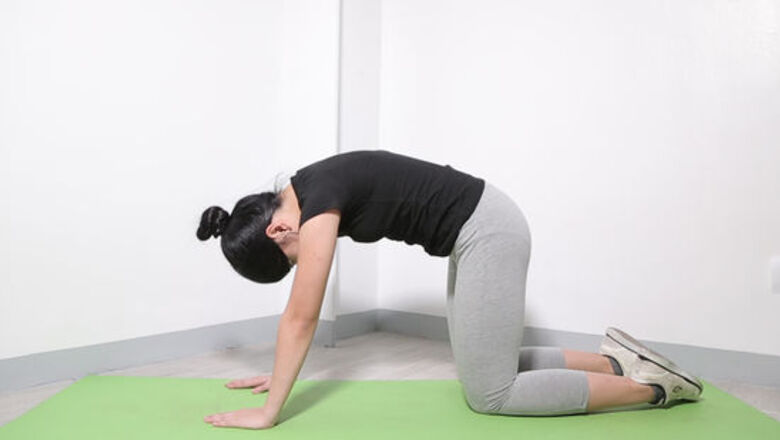
views
- Yoga poses like the half-splits can help you touch your toes. Start in a low lunge, then pop out and straighten your front leg, placing your hands on either side.
- To stretch safely, warm up by doing light cardio for 5 to 10 minutes. Walk around the block in the sunlight, jog in place, or walk up and down the stairs.
- Aim to stretch for about 15 minutes, 2 to 3 times a week to loosen the muscles required to touch your toes.
Stretches to Help You Touch Your Toes
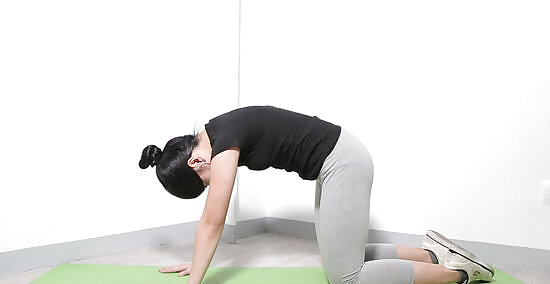
Cat-cow stretch Doing yoga poses like cat-cow can be an excellent way to improve your flexibility, especially in your hip flexors and lower back. Lay a yoga mat down or lay folded towels under your knees and hands to make this pose more comfortable. Here’s how to get into position: Start on the floor on all fours, with your shoulders directly over your wrists and your hips over your knees. Take a deep breath. Exhale and round your spine, dropping your head towards the floor (like an arched cat). Hold this position for about 5 seconds. Inhale and lift your chest, head, and tailbone towards the ceiling. Arch your back with your stomach lowered to the floor (like a cow). Hold this position for about 5 seconds. Repeat this sequence 3 times.

Seated straddle stretch This seated side straddle stretch can help increase flexibility and relieve tension in your lower back, hamstrings, and calf muscles. While completing this stretch, band over slowly and take deep breaths as you settle into position to avoid injury. Here’s how to do this stretch: Sit with your legs straight out as far apart from each other as you can without feeling any pain. Your legs should create a V-shape. Stretch your arms to the sky and slowly reach towards one foot with both hands until you feel a stretch in the back of your leg. Hold this position for about 30 seconds. If you need to, you can place your hands to the sides of your leg on the floor and try to inch your hands closer to your toes as you stretch. Repeat this sequence 3 times on each leg.

Hamstring stretch with a band To relieve the tension in your hamstring and the top of your calf, lie on your back and wrap a resistance band or a yoga strap around one foot and bring your foot to your hands. Here’s how to do it: Lie on your back with your legs bent at the knee and your feet flat on the floor. Extend one leg upwards and wrap a yoga strap or a resistance band around your foot. Lay your other leg straight out. Grab the strap and slowly pull your foot towards you until you feel a stretch in the back of your leg. Try to keep your legs straight and your back flat as you pull. Hold this position for 30 seconds or until you feel a little uncomfortable, but not in pain. Release this position, then do the same stretch on the other leg. Repeat 3 times on each leg.
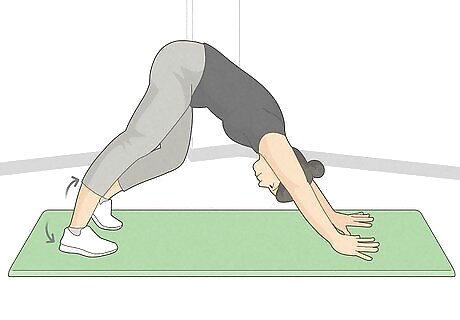
Downward dog Downward dog is another popular yoga stretch that elongates the spine and stretches and widens the hamstrings and calves, which are all needed to touch your toes. Here’s how to do it: Start on the floor in all fours with your shoulders over your wrists and your hips over your knees. Lift your knees up off the floor, pressing up from your hands with your toes into the ground. Straighten your legs as much as you can until your body creates an upside-down V-shape. Try to sink one of your heels toward the floor, then straighten it out and sink the other heel toward the floor, pedaling your feet. Bend your knees a little if you’re feeling extra tight. Hold this position for at least 30 seconds, pedaling your feet slowly to release tension. Repeat this sequence 3 times.
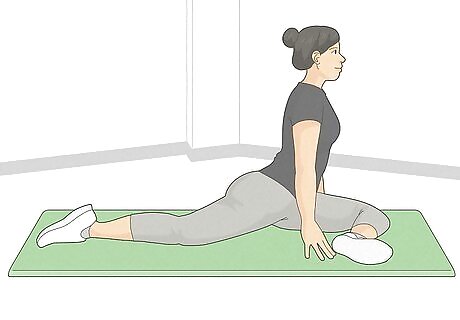
Pigeon pose Pigeon pose opens up your hips and stretches the muscles in your lower back. Not only can this pose get you one step closer to touching your toes, but it can also promote better blood circulation and digestion. To get into position: Begin in a low lunge, with your left leg bent in front of you and your right leg extended straight out behind you. Lower your pelvis to the floor, turning your left leg so that your knee faces out to the left and your left thigh touches or almost touches the floor. Point your right leg straight out behind you. Walk your hands out in front of your leg, letting your chest rest over your left knee. Hold this position for at least 30 seconds, then repeat on the other side.
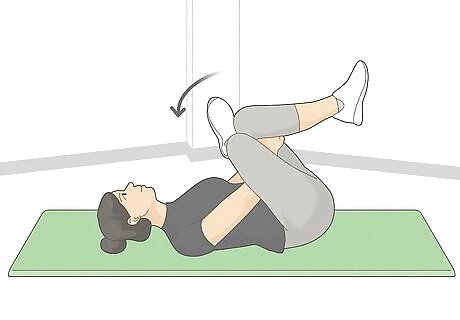
Figure-four stretch The figure-four stretch can help release tension and improve flexibility in the hip flexors, which are needed to bend down and touch your toes while keeping your spine straight. To stretch: Lie on your back with your knees bent and your feet flat on the floor. Cross your right ankle over your left thigh. Lift your left foot off the floor, pushing your right left up, and grab the back of your left thigh with both hands. Gently pull your legs toward your chest, making sure that your head and shoulders stay flat against the floor. If your head and shoulders keep lifting, you can use a resistance band or yoga strap to pull your legs instead of your hands. Hold this position for 30 to 60 seconds, then repeat this sequence on the opposite leg.
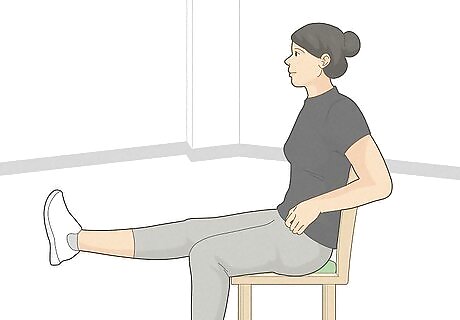
Seated leg extension The seated leg extension is popular with runners because it specifically targets your hips, calves, and hamstrings. Practicing this stretch can not only increase flexibility in these areas, but it can also strengthen and stabilize your knee. Here’s how to do it: Sit on a chair with your back straight and both feet flat on the floor. Extend your left leg out in front of you. Lift it as high as you can without rounding your spine. If you need to balance, place your hands on the side of your chair. Lean back a little more if you need to. Hold this position for 30 seconds, then repeat this sequence on the other leg.
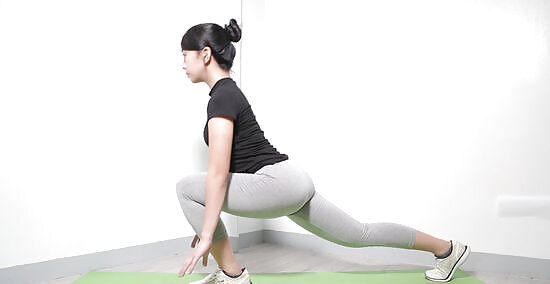
Hip flexor stretch This stretch can help increase flexibility in your hip flexors, which are located above your upper thighs and just below your hip bones. While doing this stretch, use a yoga mat or place a folded towel under your knee to help cushion your kneecap. Here’s how to do it: Kneel down on the floor on your right knee. Place your left foot in front of you, bending your knee. If you need to, you can place your left hand on your left leg for extra stability and place your right hand on your right hip to avoid bending at your waist. Lean forward, shifting your body weight onto your left leg, and touch the floor with both hands on either side of your left foot. Hold this position for 30 seconds. You should feel a stretch in your right thigh. Switch legs and repeat this sequence. Stretch both legs 3 times each.
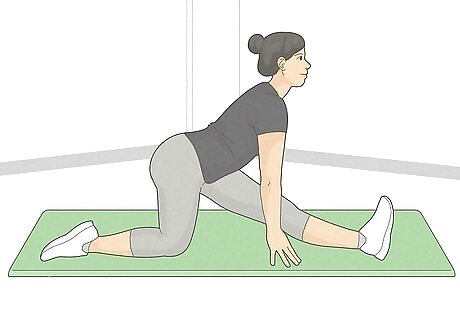
Half-splits The half-splits pose stretches the hamstrings on your front leg while you keep your back straight, which makes this a great stretch to strengthen the muscles needed for you to be able to reach your feet. Here’s how to get into this pose: Start in a low lunge. Bend your front leg in front of you and bend your back leg with your foot and knee touching the ground. Place your hands on the floor beside you. Straighten out your front leg as much as possible, keeping your hands pressed against the floor. Hold this position for 30 seconds, then switch to the other leg and repeat.
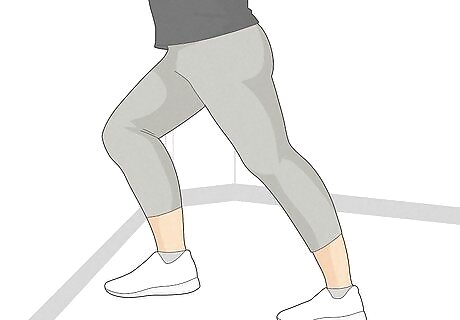
Calf wall stretch The calf wall stretch does exactly what it sounds like—it stretches your calves. This stretch is particularly great for loosening any of the tight muscles in your calf that are needed to bend over and touch your toes. Here’s how to do this stretch: Place the palms of your hands against the wall and stand about an arm’s length away from it with your feet together. Put one foot in front of the other. Push against the wall and bend your front leg forward, keeping your back straight. You should feel a stretch in the calf of your back leg. Hold this position for 30 seconds, then switch sides and repeat.
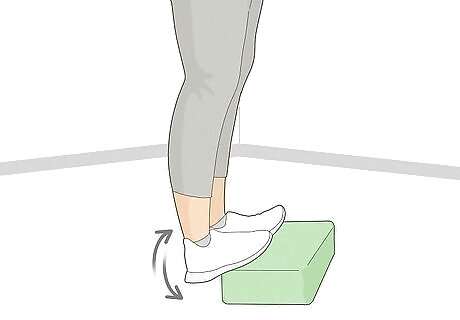
Calf stretch on a step This stretch can improve flexibility and relieve tension in your calf. All you need to complete this stretch is a pile of books or a slim yoga block. You can also do this stretch against a wall by standing about an arm’s length away and pressing your toes to the baseboards. To do this stretch: Stand with your feet together and put your toes against a pile of books or a slim yoga block with your heels on the floor. Reach down and try to touch your toes, keeping your back straight. Bend your knees a little if you feel too much tension. Hold this position for at least 30 seconds. Repeat this sequence at least 3 times per leg. Repeat this sequence once more, but this time place your heels on the books or block and your toes on the floor.

Seated toe reach This forward bend can help battle tight hips, hamstrings, and lower back. If your lower back or hamstrings feel super tight while you’re in this pose, you can modify it by sitting on the edge of a folded blanket or bending your knees and placing a rolled blanket underneath them so you can touch your toes. To do this stretch: Sit on the floor with your legs straight out and pressed together and your toes pointed towards the ceiling. Reach your hands towards the ceiling and lean forward slightly. Slowly bring your hands down towards your toes. If you can’t reach all the way, place your hands at the sides of your legs or on the floor next to them. Hold this position for 30 seconds. Repeat this sequence 3 times.

Foam roller exercises Rolling over the tight spots on your hamstrings, calves, and lower back with a foam roller can help relax your muscles, reduce muscle inflammation, and increase the range of motion in those areas. After you do your regular stretches, try adding in this foam rolling routine: Hamstrings: Start with the foam roller at the top of your hamstring just below your hip. Slowly roll down toward your knee until you find a tender spot, then hold it for 30 seconds. Repeat 2 to 3 times per leg. Calves: Start with the foam roller at the back of your calf, just below your knee. Slowly roll down toward your ankle until you find a tense spot, then hold for 30 seconds. Repeat 2 to 3 times per leg. Lower back: Start with the foam roller at the bottom of your lower back just above your tailbone. Slowly roll up your spine until you find a tense spot, then hold for 30 seconds. Try not to roll down your back to keep from compressing your spine. Repeat 2 to 3 times.
Stretching Safely to Touch Your Toes
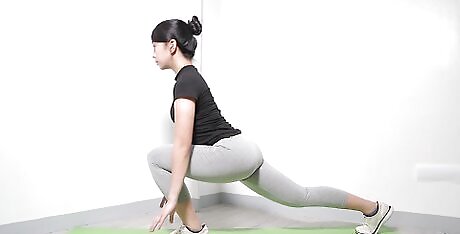
Warm up by doing 5 to 10 minutes of light cardio before you stretch. Warming up before you stretch can increase the flow of oxygen to your muscles and activate the connections between your nerves and your muscles, which can improve your range of motion. To warm up, you can: Take a short walk around the block in the sunlight. Walk up and down the stairs. Jog in place. Do jumping jacks. Take a warm bath.
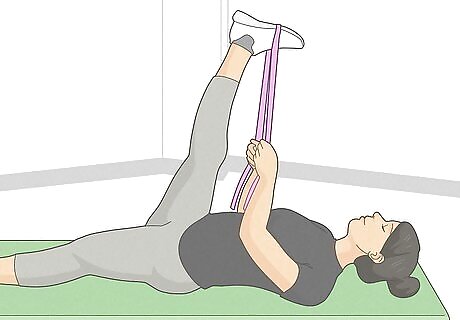
Focus on the muscle you’re stretching and take deep breaths. Stretching can not only positively affect your body, but your mind. As you stretch, imagine that you’re sending your breath into the tense areas of your body, and take deep breaths slowly and rhythmically.
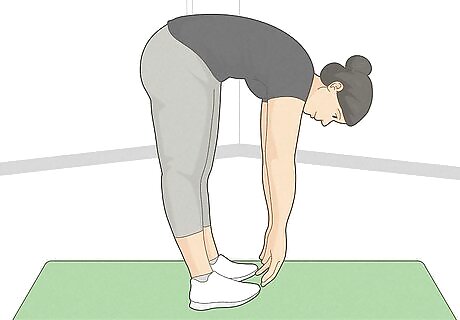
Move slowly into position and avoid bouncing as you stretch. Lots of people might be tempted to bounce in and out of position, but that can lead to injury and contribute to more muscle tightness. Instead, ease into the position slowly and smoothly. Slight discomfort during stretching is completely normal, but it should never be painful. If you feel any pain, back off to the point where you don’t feel pain, then hold the stretch.
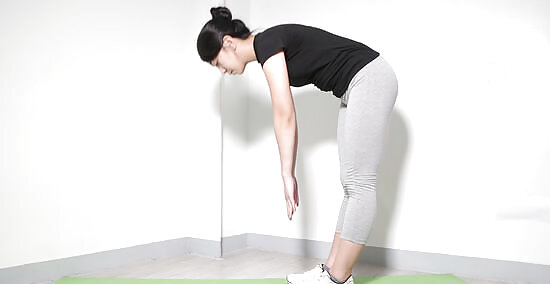
Touch your toes standing up after you stretch to track your improvement. While touching your toes standing up isn’t the best way to increase your flexibility and improve your range of motion in your calves, hamstrings, and hip flexors, touching your toes after you stretch can help you see how far you’ve come. To touch your toes correctly: Stand up with your feet hip-width apart. Shift your hips backward slightly. Slide your arms down your thighs towards your feet until you feel a stretch in the back of your legs. Hold this position for 30 seconds. Try to slowly inch your hands down as you sink into this position. Repeat this sequence 3 times. If you’d like a deeper stretch, hold a weight with both hands as you bend down towards your toes.
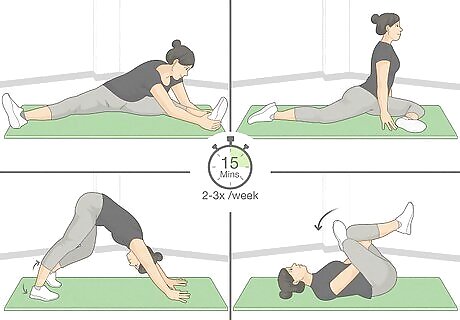
Aim to stretch for 15 minutes a day, 2 to 3 times a week. To gain the most out of stretching and keep the ability to touch your toes, consistency is key. Make stretching a part of your weekly routine—even just stretching 5-10 minutes at a time 2 to 3 times a week can help improve your flexibility. The number of weeks you need to stretch to reach your goal depends on your age and your level of activity. However, you should see the most progress after 6 to 8 weeks. If you can’t do all of these stretches during the workday, you can even just throw your foot up on a bench or chair and try to reach your toes that way to stretch out your hamstrings.
Why can’t I touch my toes?
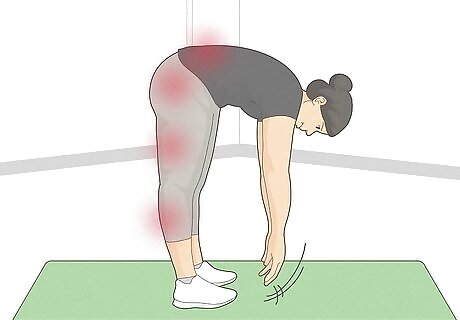
You might have limited flexibility in your lower back, hips, calves, and hamstrings. Sitting, standing, or wearing high heels for extended periods of time can all shorten and tighten the muscles in your legs and hips, making it difficult to bend over. Stretching can help improve your flexibility, which can help you touch your toes and can also: Improve your performance in physical activities Help your joints move through their full range of motion Decrease your risk of hamstring and tendon injuries Improve your speed, balance, and power Enable your muscles to work more effectively Improve your ability to move through daily activities

















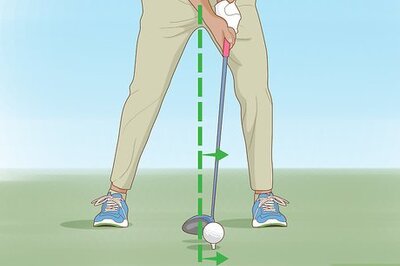
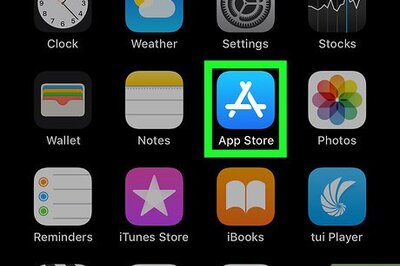

Comments
0 comment